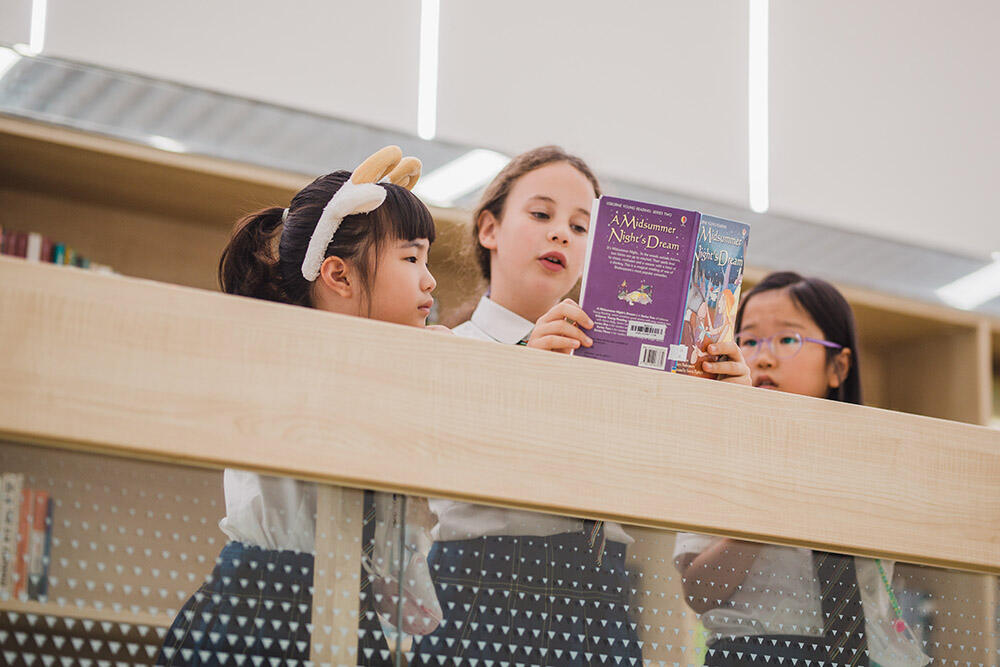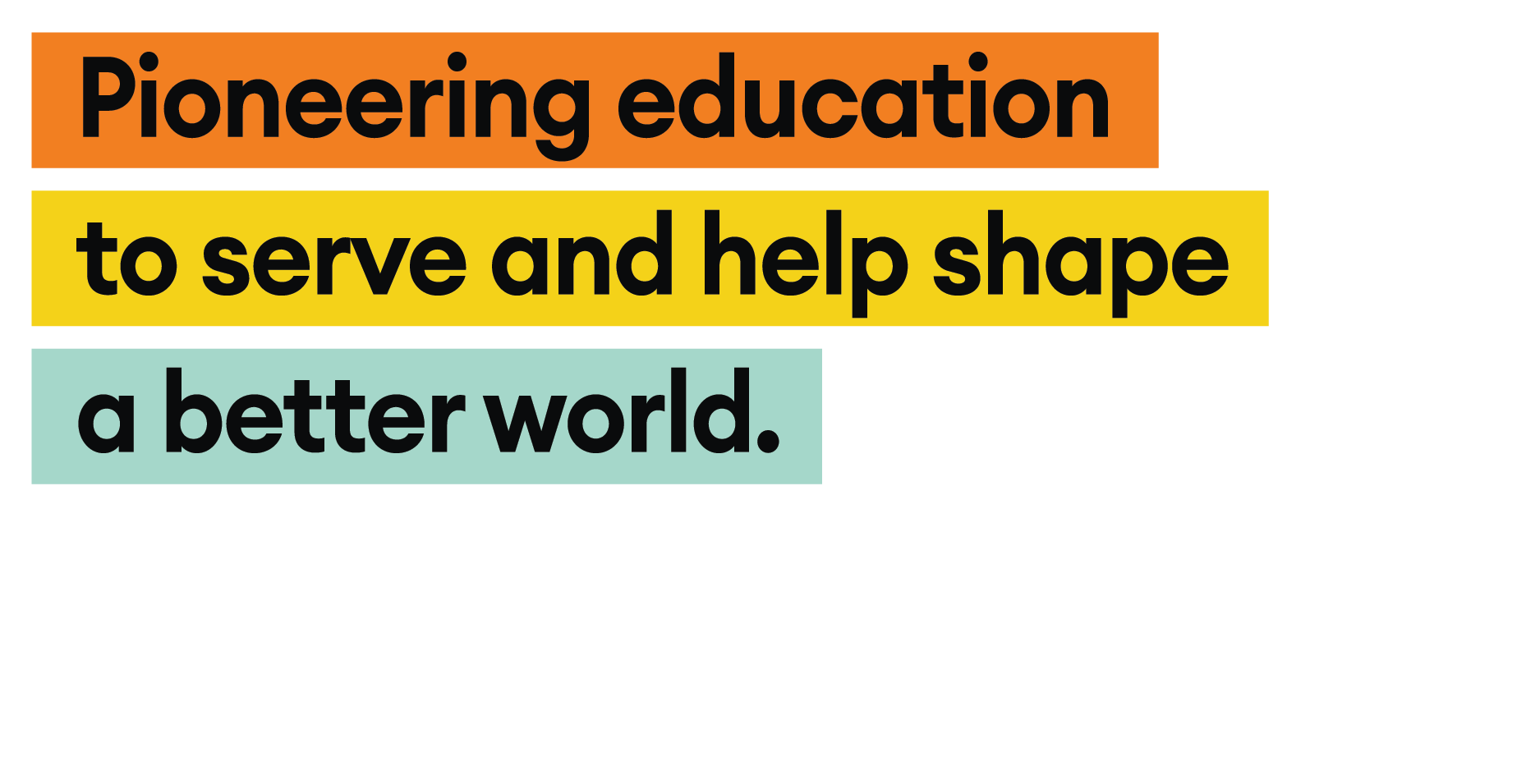How to Use 5 Child Rights to Evaluate International Schooling
22 Nov 2019
In this Educational Insights Series, experts from across the Wellington College group give advice, practical help and tips for parents who are keen to give further support for their children's learning. In the previous article Toby Roundell looked at the history and some of the driving forces that led to the establishment of the United Nations Convention on the Rights of the Child (UNCRC). In today’s article, he outlines the scope of the Convention and then explores how a combination of five articles known as the ‘5 Umbrella Rights’ can help parents and teachers analyse international schooling from a child rights perspective.

 The interplay between articles reflects the complexity, on a micro and macro continuum, of the nature of the child’s existence in the world today. There are articles that address the child as an individual, such as the right to life (Art 6) and freedom of expression (Art 13). There are articles that consider the child in familial contexts – such as parental guidance (Art. 5) and adoption (Art 21). Moving more towards a macro outlook, the child is considered in local and national contexts through articles on minority rights (Art. 30) and social security provisions (Art. 26). Then at the broadest global level there are rights that address universal obligations in areas such as education, health and culture. There are also rights that place strong obligations over abuse, trafficking, child labor and exploitation. As we can see, the scope of the Convention is vast. All rights, however, contribute to a vision that pines to see the world’s children as well-rounded, happy, confident, knowledgeable and healthy human beings.
The interplay between articles reflects the complexity, on a micro and macro continuum, of the nature of the child’s existence in the world today. There are articles that address the child as an individual, such as the right to life (Art 6) and freedom of expression (Art 13). There are articles that consider the child in familial contexts – such as parental guidance (Art. 5) and adoption (Art 21). Moving more towards a macro outlook, the child is considered in local and national contexts through articles on minority rights (Art. 30) and social security provisions (Art. 26). Then at the broadest global level there are rights that address universal obligations in areas such as education, health and culture. There are also rights that place strong obligations over abuse, trafficking, child labor and exploitation. As we can see, the scope of the Convention is vast. All rights, however, contribute to a vision that pines to see the world’s children as well-rounded, happy, confident, knowledgeable and healthy human beings.
 Nevertheless, there is danger of falling into the trap of seeing the 54 articles as a type of shopping list to recite or a to-do list that is done to a child rather than an approach which sees each child as a complete human being. A good analogy here, is the pawn (the child) on a chess board being picked up and moved around the board according to adults’ whims. In truth, as adults, we all fall foul of this on occasions, but it can be terrifying when such practices become an accepted norm, or when these attitudes become embedded in the culture of organizations or even nations. This is why the mindset of a child rights approach is critical when looking at the UNCRC.
Nevertheless, there is danger of falling into the trap of seeing the 54 articles as a type of shopping list to recite or a to-do list that is done to a child rather than an approach which sees each child as a complete human being. A good analogy here, is the pawn (the child) on a chess board being picked up and moved around the board according to adults’ whims. In truth, as adults, we all fall foul of this on occasions, but it can be terrifying when such practices become an accepted norm, or when these attitudes become embedded in the culture of organizations or even nations. This is why the mindset of a child rights approach is critical when looking at the UNCRC.
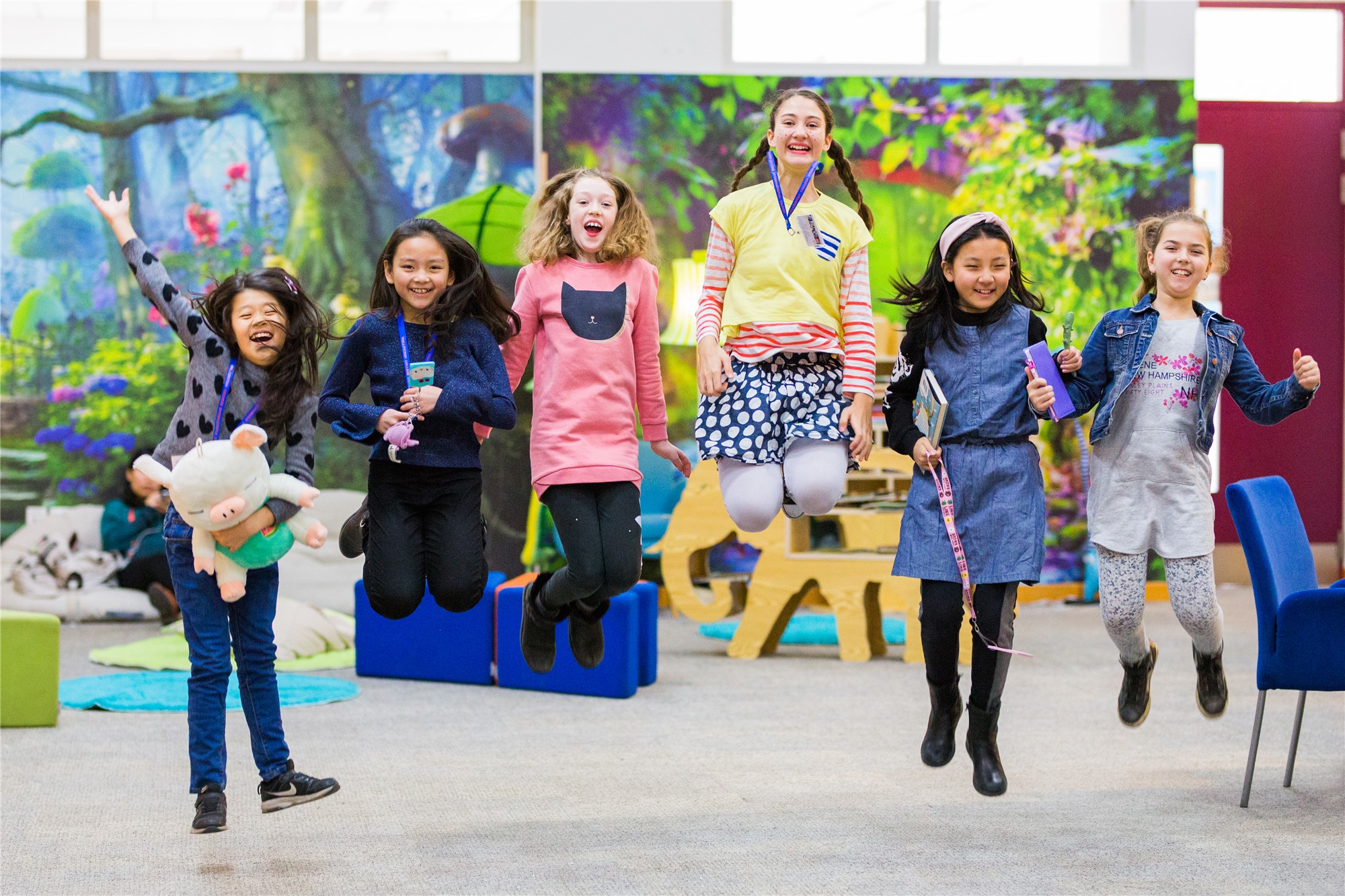 Five Umbrella Rights
The fulfilment of child rights is the Convention’s goal, but finding effective ways of achieving that goal, especially when approaching it from an organizational perspective, requires careful and measured implementation. One way we could shape the approach is to establish a framework. Taking as a premise that (i) each child is a human being and thus has equality in humanness; (ii) each child has a right to life and the right to development to his or her fullest potential; (iii) each child has an individual cognition of situation and a human experience to share; and (iv) each child has a right to their best interests being met through appropriate resources, we can draw links to five important articles from the UNCRC. These are called the ‘5 Umbrella Rights’.
Five Umbrella Rights
The fulfilment of child rights is the Convention’s goal, but finding effective ways of achieving that goal, especially when approaching it from an organizational perspective, requires careful and measured implementation. One way we could shape the approach is to establish a framework. Taking as a premise that (i) each child is a human being and thus has equality in humanness; (ii) each child has a right to life and the right to development to his or her fullest potential; (iii) each child has an individual cognition of situation and a human experience to share; and (iv) each child has a right to their best interests being met through appropriate resources, we can draw links to five important articles from the UNCRC. These are called the ‘5 Umbrella Rights’.
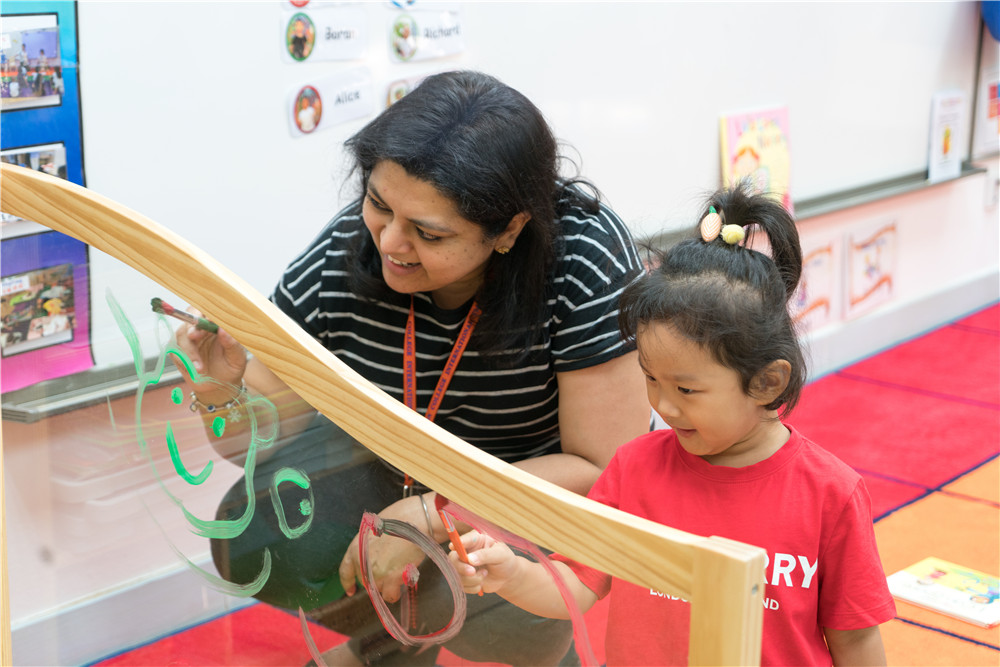 The Table and Leg Test
A possible way to visualize the ‘5 Umbrella Rights’ is as a table with four legs. Life, survival and development is the fundamental right that all other rights support and is therefore represented as the tabletop. The child (or the intervention plan for the child) occupies the space on the table. Supporting the child are four further rights (Art 2,3,4 & 12) represented as table legs without which the table would collapse. Other rights can be co-joined on the tabletop with the child, for instance, rights to do with education, healthcare, cultural expression etc. and then combining them with the child’s right to life it is possible to test the stability of a program or intervention.
The Table and Leg Test
A possible way to visualize the ‘5 Umbrella Rights’ is as a table with four legs. Life, survival and development is the fundamental right that all other rights support and is therefore represented as the tabletop. The child (or the intervention plan for the child) occupies the space on the table. Supporting the child are four further rights (Art 2,3,4 & 12) represented as table legs without which the table would collapse. Other rights can be co-joined on the tabletop with the child, for instance, rights to do with education, healthcare, cultural expression etc. and then combining them with the child’s right to life it is possible to test the stability of a program or intervention.
 The Child’s Right to Life, Survival and Development (Art 6)
Let us say we want to implement an educational program such as secondary schooling in an international context (Art 28). First, we must consider the child’s right to life (Art 6) and ensure that there is no harm coming to the child through attendance to the school. In the context of children populating independent international schools it is unlikely that there will be issues related to a child’s survival or right to life, but when we consider this right in the context of certain countries where children are involved in income generating activities that are critical to their and their family’s survival then obviously this right needs to be cautiously weighed before any further steps are taken.
The Child’s Right to Life, Survival and Development (Art 6)
Let us say we want to implement an educational program such as secondary schooling in an international context (Art 28). First, we must consider the child’s right to life (Art 6) and ensure that there is no harm coming to the child through attendance to the school. In the context of children populating independent international schools it is unlikely that there will be issues related to a child’s survival or right to life, but when we consider this right in the context of certain countries where children are involved in income generating activities that are critical to their and their family’s survival then obviously this right needs to be cautiously weighed before any further steps are taken.
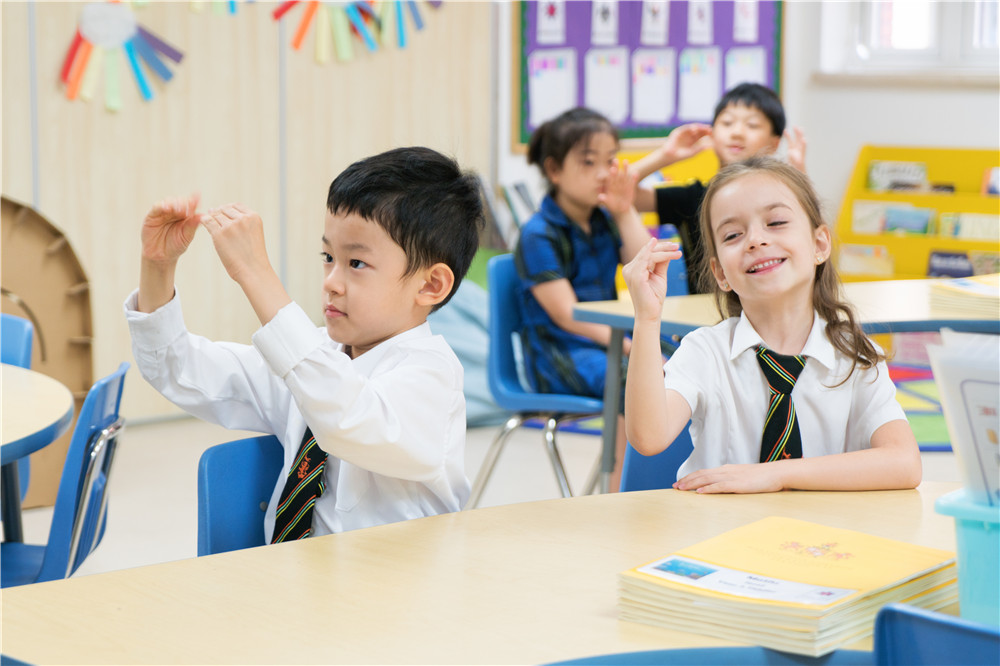 The Best Interest of the Child (Art 3)
Once the child’s survival is unequivocally secured, then we can consider the child and the educational program through the four rights represented by the four table legs. Again, taking secondary schooling in an international context, we could consider whether the curriculum is in the best interests of the child (Art 3). There are of course many types of curriculum. Wellington College International Tianjin delivers the IGCSE and A Level curriculum as these certainly prepare students for top universities around the world and could therefore be considered as in the best interests of the students who attend the college.
Our Hiba Sister Schools in Shanghai and Hangzhou, catering for Chinese nationals, delivers a Chinese national curriculum in years 6 to 9 while also blending elements of western educational ethos into the mix. This fosters strong bilingual development and prepares Chinese nationals for the international curriculums in High School and then in turn, entrance to leading universities around the world.
The Best Interest of the Child (Art 3)
Once the child’s survival is unequivocally secured, then we can consider the child and the educational program through the four rights represented by the four table legs. Again, taking secondary schooling in an international context, we could consider whether the curriculum is in the best interests of the child (Art 3). There are of course many types of curriculum. Wellington College International Tianjin delivers the IGCSE and A Level curriculum as these certainly prepare students for top universities around the world and could therefore be considered as in the best interests of the students who attend the college.
Our Hiba Sister Schools in Shanghai and Hangzhou, catering for Chinese nationals, delivers a Chinese national curriculum in years 6 to 9 while also blending elements of western educational ethos into the mix. This fosters strong bilingual development and prepares Chinese nationals for the international curriculums in High School and then in turn, entrance to leading universities around the world.
 Respect for the Views of the Child (Art 12)
The second table leg right is concerned with respect for the views of the child (Art. 12). In secondary schooling in an international context, this right can be addressed through pastoral programs and pastoral support. The strength of a pastoral program will in many ways be measured by how well a school embraces student voice.
At Wellington College International Tianjin, we have a strong house structure where student voice is promoted through student led initiatives and student committees of many kinds. Outcomes from these initiatives include charity events, trips, competitions, opportunities for performance, debates, leadership opportunities and student council forums.
Furthermore, each student has a dedicated house tutor who spends one to one and small group time exploring the social and emotional landscapes of well-being, while also maintaining oversight of their tutee’s academic and non-academic progress. Critical to these ‘tutor / tutee’ interactions is the open nature of conversations, often founded on strong coaching principles, that promotes and encourages each child to express their views, feelings and wishes and to contribute to decisions around their daily life at school.
Respect for the Views of the Child (Art 12)
The second table leg right is concerned with respect for the views of the child (Art. 12). In secondary schooling in an international context, this right can be addressed through pastoral programs and pastoral support. The strength of a pastoral program will in many ways be measured by how well a school embraces student voice.
At Wellington College International Tianjin, we have a strong house structure where student voice is promoted through student led initiatives and student committees of many kinds. Outcomes from these initiatives include charity events, trips, competitions, opportunities for performance, debates, leadership opportunities and student council forums.
Furthermore, each student has a dedicated house tutor who spends one to one and small group time exploring the social and emotional landscapes of well-being, while also maintaining oversight of their tutee’s academic and non-academic progress. Critical to these ‘tutor / tutee’ interactions is the open nature of conversations, often founded on strong coaching principles, that promotes and encourages each child to express their views, feelings and wishes and to contribute to decisions around their daily life at school.
 Non-Discrimination (Art 2)
Many International schools are open minded by nature, and certainly influential accreditation bodies such as the Council of International Schools (CIS) welcome and celebrate diversity. CIS’s current protocol and evaluation framework emphasizes intercultural perspectives and diversity and one of the four drivers of the evaluation and accreditation process is global citizenship.
Diversity, as a concept, embodies key values such as understanding and respect for each other, regardless of color or creed. And these values are very much central to Wellington’s vision and mission of developing “well-rounded individuals with strong values and the skills to thrive within an ever-changing global society”.
Non-Discrimination (Art 2)
Many International schools are open minded by nature, and certainly influential accreditation bodies such as the Council of International Schools (CIS) welcome and celebrate diversity. CIS’s current protocol and evaluation framework emphasizes intercultural perspectives and diversity and one of the four drivers of the evaluation and accreditation process is global citizenship.
Diversity, as a concept, embodies key values such as understanding and respect for each other, regardless of color or creed. And these values are very much central to Wellington’s vision and mission of developing “well-rounded individuals with strong values and the skills to thrive within an ever-changing global society”.
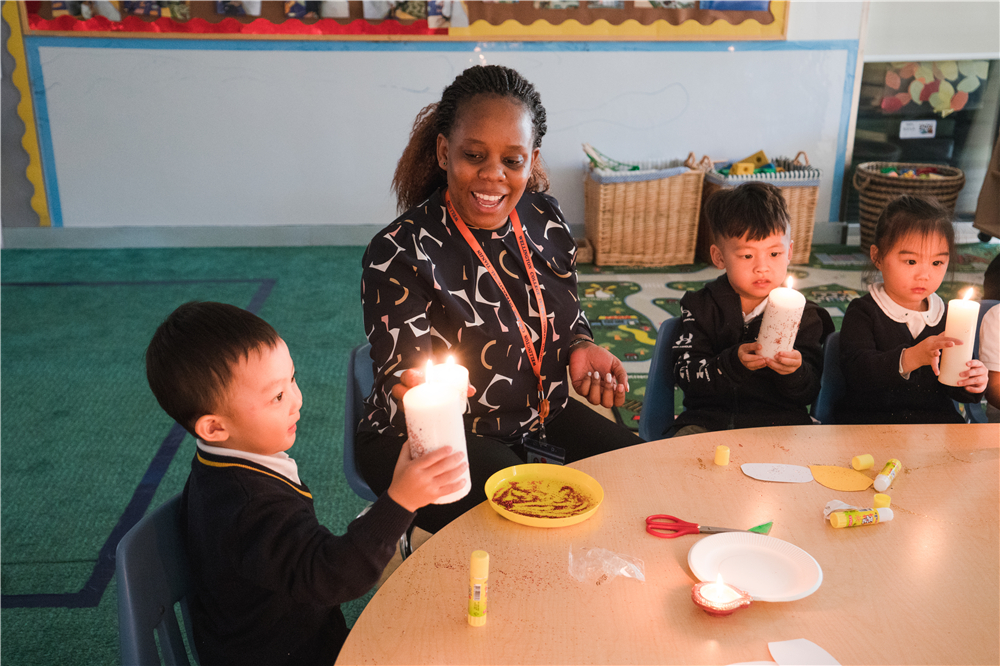 Implementation to the Maxim Extent of Available Resources (Art 4)
The final ‘table-leg’ right is concerned with the structure and stability of systems and resources. In the context of international schools this may apply to the governance and leadership of the school: How well founded and informed the governing body is; how secure the school’s financing is; how stable the school is legally; and how well connected the school is to external and internal supporting bodies.
Wellington College International Tianjin has many strengths in this area. A governing body that is populated by educational experts as well as specialists in business, marketing and finance. The college is supported by a central office in Shanghai that monitors educational standards while offering expertise in areas such as human resources, facilities and leadership.
The college also has intrinsic links to other Wellington Colleges in the group, including Wellington College UK, enabling powerful dialogue on best practices in governance, leadership and of course in the critical domains of teaching and learning. All this contributes to a persuasive implementation that enables an effective delivery of schooling that has the child and his or her rights at the center.
Implementation to the Maxim Extent of Available Resources (Art 4)
The final ‘table-leg’ right is concerned with the structure and stability of systems and resources. In the context of international schools this may apply to the governance and leadership of the school: How well founded and informed the governing body is; how secure the school’s financing is; how stable the school is legally; and how well connected the school is to external and internal supporting bodies.
Wellington College International Tianjin has many strengths in this area. A governing body that is populated by educational experts as well as specialists in business, marketing and finance. The college is supported by a central office in Shanghai that monitors educational standards while offering expertise in areas such as human resources, facilities and leadership.
The college also has intrinsic links to other Wellington Colleges in the group, including Wellington College UK, enabling powerful dialogue on best practices in governance, leadership and of course in the critical domains of teaching and learning. All this contributes to a persuasive implementation that enables an effective delivery of schooling that has the child and his or her rights at the center.
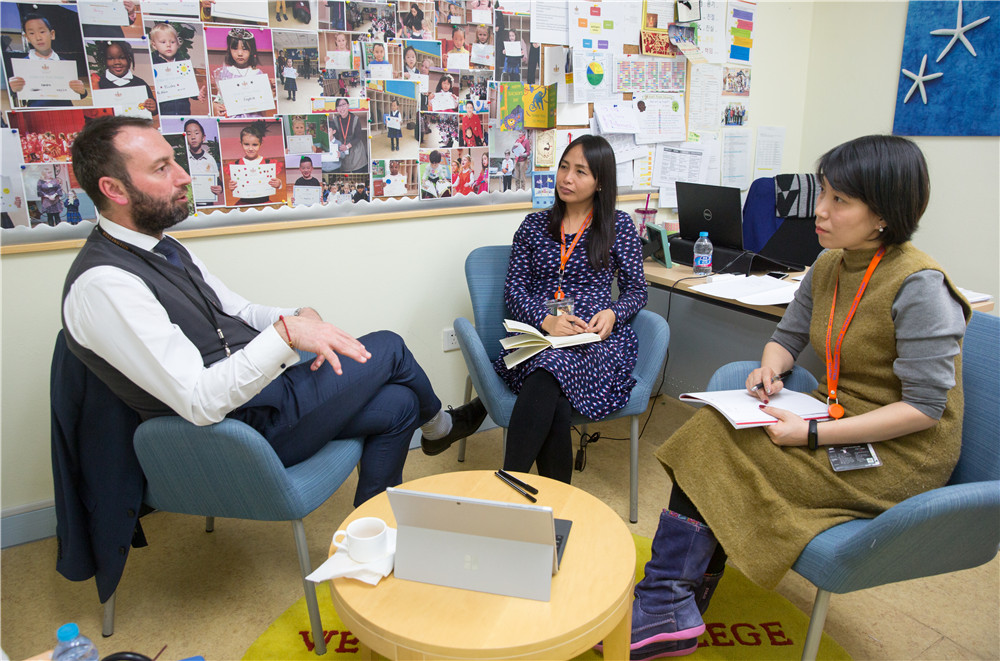

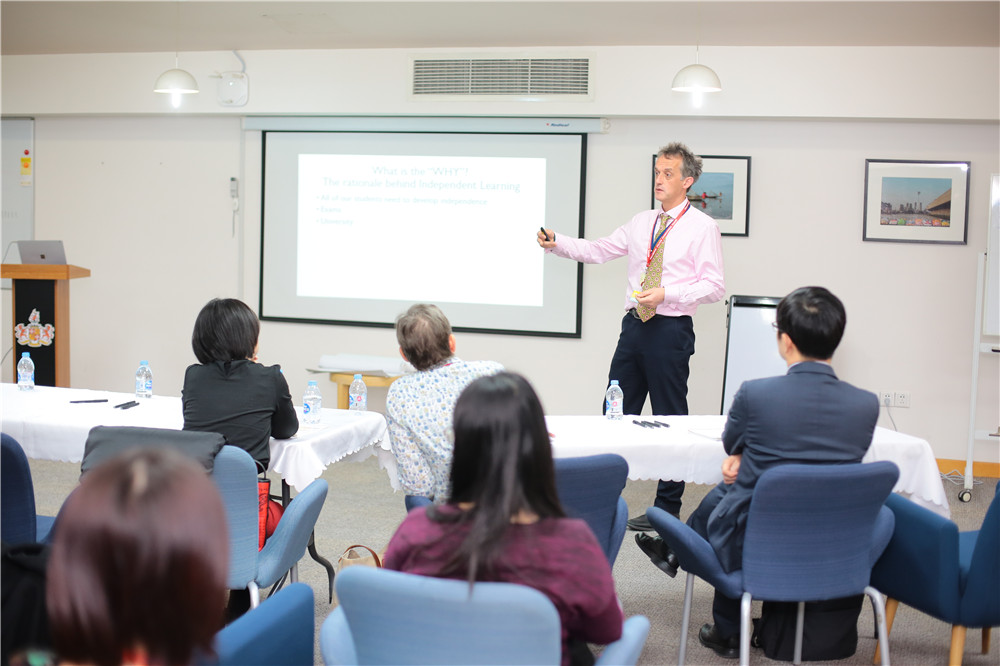


From the Pastoral & Safeguarding Lead / Steering Committee Chair – CIS Toby Roundell
What are Articles in the United Nations Convention on the Rights of the Child? An article, in the context of a human rights convention, is a clause that states a right or series of closely related rights. The United Nations Convention on the Rights of the Child (UNCRC) is made up of 54 such articles and each one is important. It is the synergistic quality of each article’s interdependent relationship with all others that brings resonance and meaning to the Convention as a whole. For instance, if we take one of the articles from the Convention, let us say Article 6 – ‘the survival as a right of every child’, we may find it is inextricably linked to other articles, for instance, Article 24, ‘ - health and medical care’ which, in the case of poverty, is then related to another article – ‘help and recognition from governments’ and to another ‘qualities and standards of living’ as so on. The interplay between articles reflects the complexity, on a micro and macro continuum, of the nature of the child’s existence in the world today. There are articles that address the child as an individual, such as the right to life (Art 6) and freedom of expression (Art 13). There are articles that consider the child in familial contexts – such as parental guidance (Art. 5) and adoption (Art 21). Moving more towards a macro outlook, the child is considered in local and national contexts through articles on minority rights (Art. 30) and social security provisions (Art. 26). Then at the broadest global level there are rights that address universal obligations in areas such as education, health and culture. There are also rights that place strong obligations over abuse, trafficking, child labor and exploitation. As we can see, the scope of the Convention is vast. All rights, however, contribute to a vision that pines to see the world’s children as well-rounded, happy, confident, knowledgeable and healthy human beings.
The interplay between articles reflects the complexity, on a micro and macro continuum, of the nature of the child’s existence in the world today. There are articles that address the child as an individual, such as the right to life (Art 6) and freedom of expression (Art 13). There are articles that consider the child in familial contexts – such as parental guidance (Art. 5) and adoption (Art 21). Moving more towards a macro outlook, the child is considered in local and national contexts through articles on minority rights (Art. 30) and social security provisions (Art. 26). Then at the broadest global level there are rights that address universal obligations in areas such as education, health and culture. There are also rights that place strong obligations over abuse, trafficking, child labor and exploitation. As we can see, the scope of the Convention is vast. All rights, however, contribute to a vision that pines to see the world’s children as well-rounded, happy, confident, knowledgeable and healthy human beings.
 Nevertheless, there is danger of falling into the trap of seeing the 54 articles as a type of shopping list to recite or a to-do list that is done to a child rather than an approach which sees each child as a complete human being. A good analogy here, is the pawn (the child) on a chess board being picked up and moved around the board according to adults’ whims. In truth, as adults, we all fall foul of this on occasions, but it can be terrifying when such practices become an accepted norm, or when these attitudes become embedded in the culture of organizations or even nations. This is why the mindset of a child rights approach is critical when looking at the UNCRC.
Nevertheless, there is danger of falling into the trap of seeing the 54 articles as a type of shopping list to recite or a to-do list that is done to a child rather than an approach which sees each child as a complete human being. A good analogy here, is the pawn (the child) on a chess board being picked up and moved around the board according to adults’ whims. In truth, as adults, we all fall foul of this on occasions, but it can be terrifying when such practices become an accepted norm, or when these attitudes become embedded in the culture of organizations or even nations. This is why the mindset of a child rights approach is critical when looking at the UNCRC.
 Five Umbrella Rights
The fulfilment of child rights is the Convention’s goal, but finding effective ways of achieving that goal, especially when approaching it from an organizational perspective, requires careful and measured implementation. One way we could shape the approach is to establish a framework. Taking as a premise that (i) each child is a human being and thus has equality in humanness; (ii) each child has a right to life and the right to development to his or her fullest potential; (iii) each child has an individual cognition of situation and a human experience to share; and (iv) each child has a right to their best interests being met through appropriate resources, we can draw links to five important articles from the UNCRC. These are called the ‘5 Umbrella Rights’.
Five Umbrella Rights
The fulfilment of child rights is the Convention’s goal, but finding effective ways of achieving that goal, especially when approaching it from an organizational perspective, requires careful and measured implementation. One way we could shape the approach is to establish a framework. Taking as a premise that (i) each child is a human being and thus has equality in humanness; (ii) each child has a right to life and the right to development to his or her fullest potential; (iii) each child has an individual cognition of situation and a human experience to share; and (iv) each child has a right to their best interests being met through appropriate resources, we can draw links to five important articles from the UNCRC. These are called the ‘5 Umbrella Rights’.
- life, survival and development (Art 6)
- best interests of the child (Art 3)
- non-discrimination (Art 2)
- participation (Art12)
- implementation to the maxim extent of available resources (Art 4)
 The Table and Leg Test
A possible way to visualize the ‘5 Umbrella Rights’ is as a table with four legs. Life, survival and development is the fundamental right that all other rights support and is therefore represented as the tabletop. The child (or the intervention plan for the child) occupies the space on the table. Supporting the child are four further rights (Art 2,3,4 & 12) represented as table legs without which the table would collapse. Other rights can be co-joined on the tabletop with the child, for instance, rights to do with education, healthcare, cultural expression etc. and then combining them with the child’s right to life it is possible to test the stability of a program or intervention.
The Table and Leg Test
A possible way to visualize the ‘5 Umbrella Rights’ is as a table with four legs. Life, survival and development is the fundamental right that all other rights support and is therefore represented as the tabletop. The child (or the intervention plan for the child) occupies the space on the table. Supporting the child are four further rights (Art 2,3,4 & 12) represented as table legs without which the table would collapse. Other rights can be co-joined on the tabletop with the child, for instance, rights to do with education, healthcare, cultural expression etc. and then combining them with the child’s right to life it is possible to test the stability of a program or intervention.
 The Child’s Right to Life, Survival and Development (Art 6)
Let us say we want to implement an educational program such as secondary schooling in an international context (Art 28). First, we must consider the child’s right to life (Art 6) and ensure that there is no harm coming to the child through attendance to the school. In the context of children populating independent international schools it is unlikely that there will be issues related to a child’s survival or right to life, but when we consider this right in the context of certain countries where children are involved in income generating activities that are critical to their and their family’s survival then obviously this right needs to be cautiously weighed before any further steps are taken.
The Child’s Right to Life, Survival and Development (Art 6)
Let us say we want to implement an educational program such as secondary schooling in an international context (Art 28). First, we must consider the child’s right to life (Art 6) and ensure that there is no harm coming to the child through attendance to the school. In the context of children populating independent international schools it is unlikely that there will be issues related to a child’s survival or right to life, but when we consider this right in the context of certain countries where children are involved in income generating activities that are critical to their and their family’s survival then obviously this right needs to be cautiously weighed before any further steps are taken.
 The Best Interest of the Child (Art 3)
Once the child’s survival is unequivocally secured, then we can consider the child and the educational program through the four rights represented by the four table legs. Again, taking secondary schooling in an international context, we could consider whether the curriculum is in the best interests of the child (Art 3). There are of course many types of curriculum. Wellington College International Tianjin delivers the IGCSE and A Level curriculum as these certainly prepare students for top universities around the world and could therefore be considered as in the best interests of the students who attend the college.
Our Hiba Sister Schools in Shanghai and Hangzhou, catering for Chinese nationals, delivers a Chinese national curriculum in years 6 to 9 while also blending elements of western educational ethos into the mix. This fosters strong bilingual development and prepares Chinese nationals for the international curriculums in High School and then in turn, entrance to leading universities around the world.
The Best Interest of the Child (Art 3)
Once the child’s survival is unequivocally secured, then we can consider the child and the educational program through the four rights represented by the four table legs. Again, taking secondary schooling in an international context, we could consider whether the curriculum is in the best interests of the child (Art 3). There are of course many types of curriculum. Wellington College International Tianjin delivers the IGCSE and A Level curriculum as these certainly prepare students for top universities around the world and could therefore be considered as in the best interests of the students who attend the college.
Our Hiba Sister Schools in Shanghai and Hangzhou, catering for Chinese nationals, delivers a Chinese national curriculum in years 6 to 9 while also blending elements of western educational ethos into the mix. This fosters strong bilingual development and prepares Chinese nationals for the international curriculums in High School and then in turn, entrance to leading universities around the world.
 Respect for the Views of the Child (Art 12)
The second table leg right is concerned with respect for the views of the child (Art. 12). In secondary schooling in an international context, this right can be addressed through pastoral programs and pastoral support. The strength of a pastoral program will in many ways be measured by how well a school embraces student voice.
At Wellington College International Tianjin, we have a strong house structure where student voice is promoted through student led initiatives and student committees of many kinds. Outcomes from these initiatives include charity events, trips, competitions, opportunities for performance, debates, leadership opportunities and student council forums.
Furthermore, each student has a dedicated house tutor who spends one to one and small group time exploring the social and emotional landscapes of well-being, while also maintaining oversight of their tutee’s academic and non-academic progress. Critical to these ‘tutor / tutee’ interactions is the open nature of conversations, often founded on strong coaching principles, that promotes and encourages each child to express their views, feelings and wishes and to contribute to decisions around their daily life at school.
Respect for the Views of the Child (Art 12)
The second table leg right is concerned with respect for the views of the child (Art. 12). In secondary schooling in an international context, this right can be addressed through pastoral programs and pastoral support. The strength of a pastoral program will in many ways be measured by how well a school embraces student voice.
At Wellington College International Tianjin, we have a strong house structure where student voice is promoted through student led initiatives and student committees of many kinds. Outcomes from these initiatives include charity events, trips, competitions, opportunities for performance, debates, leadership opportunities and student council forums.
Furthermore, each student has a dedicated house tutor who spends one to one and small group time exploring the social and emotional landscapes of well-being, while also maintaining oversight of their tutee’s academic and non-academic progress. Critical to these ‘tutor / tutee’ interactions is the open nature of conversations, often founded on strong coaching principles, that promotes and encourages each child to express their views, feelings and wishes and to contribute to decisions around their daily life at school.
 Non-Discrimination (Art 2)
Many International schools are open minded by nature, and certainly influential accreditation bodies such as the Council of International Schools (CIS) welcome and celebrate diversity. CIS’s current protocol and evaluation framework emphasizes intercultural perspectives and diversity and one of the four drivers of the evaluation and accreditation process is global citizenship.
Diversity, as a concept, embodies key values such as understanding and respect for each other, regardless of color or creed. And these values are very much central to Wellington’s vision and mission of developing “well-rounded individuals with strong values and the skills to thrive within an ever-changing global society”.
Non-Discrimination (Art 2)
Many International schools are open minded by nature, and certainly influential accreditation bodies such as the Council of International Schools (CIS) welcome and celebrate diversity. CIS’s current protocol and evaluation framework emphasizes intercultural perspectives and diversity and one of the four drivers of the evaluation and accreditation process is global citizenship.
Diversity, as a concept, embodies key values such as understanding and respect for each other, regardless of color or creed. And these values are very much central to Wellington’s vision and mission of developing “well-rounded individuals with strong values and the skills to thrive within an ever-changing global society”.
 Implementation to the Maxim Extent of Available Resources (Art 4)
The final ‘table-leg’ right is concerned with the structure and stability of systems and resources. In the context of international schools this may apply to the governance and leadership of the school: How well founded and informed the governing body is; how secure the school’s financing is; how stable the school is legally; and how well connected the school is to external and internal supporting bodies.
Wellington College International Tianjin has many strengths in this area. A governing body that is populated by educational experts as well as specialists in business, marketing and finance. The college is supported by a central office in Shanghai that monitors educational standards while offering expertise in areas such as human resources, facilities and leadership.
The college also has intrinsic links to other Wellington Colleges in the group, including Wellington College UK, enabling powerful dialogue on best practices in governance, leadership and of course in the critical domains of teaching and learning. All this contributes to a persuasive implementation that enables an effective delivery of schooling that has the child and his or her rights at the center.
Implementation to the Maxim Extent of Available Resources (Art 4)
The final ‘table-leg’ right is concerned with the structure and stability of systems and resources. In the context of international schools this may apply to the governance and leadership of the school: How well founded and informed the governing body is; how secure the school’s financing is; how stable the school is legally; and how well connected the school is to external and internal supporting bodies.
Wellington College International Tianjin has many strengths in this area. A governing body that is populated by educational experts as well as specialists in business, marketing and finance. The college is supported by a central office in Shanghai that monitors educational standards while offering expertise in areas such as human resources, facilities and leadership.
The college also has intrinsic links to other Wellington Colleges in the group, including Wellington College UK, enabling powerful dialogue on best practices in governance, leadership and of course in the critical domains of teaching and learning. All this contributes to a persuasive implementation that enables an effective delivery of schooling that has the child and his or her rights at the center.



Intrinsic links to other Wellington Colleges in the group
Summary
There are indeed other frameworks that can be added to the table and leg test that can further define how we approach implementing effective interventions and programs for children. But the essence of the Rights of the Child is well synthesized in the ‘5 Umbrella Rights’ and it is therefore an effective framework for analyzing educational provisions. As a parent, considering an international school for your child, or as a teacher weighing up a move into international teaching, looking at an international school through the lens of the ‘5 Umbrella Rights’ can help us to see whether the school really has the child at the center, or whether other aspects such as commercial gain are in fact taking precedence. Would you like to learn more about Wellington College International Tianjin? Registration is now open for families who would like to know more about our unique approach to teaching and learning as well as how we support graduates attain their top goals for university entrance. You can arrange a visit by scanning the QR code below. Our admissions’ team is available to host individual campus tours and to help you to discover what makes Wellington College special.
Scan the QR code to submit an enquiry
Related Articles

Junior School Competition Highlights27 Feb 2025
Ms Jessie JingMaths Specialist Teacher / Maths Lead Throughout the past term, pupils from our Junior School have exhibited outstanding performance by participating in several international competition
Read More

Global Cuisine Event Highlights in Wellington10 Jan 2025
Last semester, Wellington College Tianjin, in collaboration with Sodexo, hosted an array of vibrant food-themed events. Centred around the themes of "Global Citizenship" and "Sustainable Development,
Read More

Junior School Winter Show Live Streaming Podcast12 Dec 2025
This winter, warmth and courage take to the stage — Our Junior School proudly presents its annual winter production, Little Orphan Annie! This beloved musical tells the touching story of a young girl
Read More





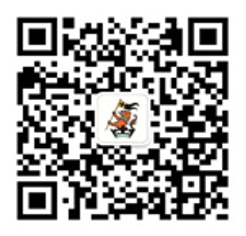
 Channel
Channel 
 Linkedin
Linkedin  Facebook
Facebook  Ins
Ins 

